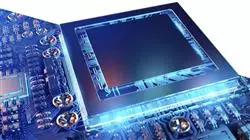University certificate
The world's largest faculty of information technology”
Introduction to the Program
Master the effective programming of parallel systems by delving into superscalar Multithreaded processors, Multicore, multiprocessor systems and processors with vector units, among other types of architectures"

Programming systems with parallel architectures can be a challenge for computer scientists, who must develop their ability to evaluate and analyze the performance of systems incorporating this technique. To do so, we must delve into the requirements of parallel computing systems, such as coherence in systems with shared memory, the cost of communication between processes or the topologies of interconnection between processors, with their advantages and disadvantages.
This Postgraduate certificate explores all these issues and expands on them in detail with simulated case studies and a myriad of high-quality audiovisual resources created by the teaching team itself. Precisely this team has been selected by TECH for its extensive experience in the management and creation of complex parallel architectures, which brings practical value to all the topics covered, as they have been focused on the current reality of the most modern IT projects.
In addition, to make it as easy as possible to combine this degree with other personal responsibilities, TECH has promoted a 100% online format, in which the student does not have to attend classes or follow any kind of schedule. All the contents and didactic material are available from the beginning of the degree, and can be downloaded in full from any device with an internet connection. In this way, it is the student themselves who distributes the teaching load, without pressure or ties.
You make the important decisions at TECH, choosing where, when and how to take on the entire teaching load according to your own interests"
This Postgraduate certificate in Parallel Architectures in Computing is the most comprehensive and up-to-date educational program on the market. The most important features include:
- The development of case studies presented by experts in Parallel and Distributed Computing
- The graphic, schematic and eminently practical contents with which it is conceived provide practical information on those disciplines that are essential for professional practice
- Practical exercises where self-assessment can be used to improve learning
- Its special emphasis on innovative methodologies
- Theoretical lessons, questions for experts and individual reflection work
- Content that is accessible from any fixed or portable device with an Internet connection
Incorporate into your daily work the practical advice of a teaching team versed in Parallel Computing Architectures, while improving your skills and job potential"
The program’s teaching staff includes professionals from the sector who contribute their work experience to this training program, as well as renowned specialists from leading societies and prestigious universities.
The multimedia content, developed with the latest educational technology, will provide the professional with situated and contextual learning, i.e., a simulated environment that will provide immersive training programmed to train in real situations.
This program is designed around Problem-Based Learning, whereby the professional must try to solve the different professional practice situations that arise during the academic year. For this purpose, the student will be assisted by an innovative interactive video system created by renowned and experienced experts.
It analyzes the theory and advanced practice of vector, matrix and multiprocessor processors, with topics dedicated exclusively to them"

Enroll today in the world's largest online academic institution and don't miss the opportunity to specialize in an IT area with a great future projection"
Why study at TECH?
TECH is the world’s largest online university. With an impressive catalog of more than 14,000 university programs available in 11 languages, it is positioned as a leader in employability, with a 99% job placement rate. In addition, it relies on an enormous faculty of more than 6,000 professors of the highest international renown.

Study at the world's largest online university and guarantee your professional success. The future starts at TECH”
The world’s best online university according to FORBES
The prestigious Forbes magazine, specialized in business and finance, has highlighted TECH as “the world's best online university” This is what they have recently stated in an article in their digital edition in which they echo the success story of this institution, “thanks to the academic offer it provides, the selection of its teaching staff, and an innovative learning method aimed at educating the professionals of the future”
A revolutionary study method, a cutting-edge faculty and a practical focus: the key to TECH's success.
The most complete study plans on the university scene
TECH offers the most complete study plans on the university scene, with syllabuses that cover fundamental concepts and, at the same time, the main scientific advances in their specific scientific areas. In addition, these programs are continuously being updated to guarantee students the academic vanguard and the most in-demand professional skills. In this way, the university's qualifications provide its graduates with a significant advantage to propel their careers to success.
TECH offers the most comprehensive and intensive study plans on the current university scene.
A world-class teaching staff
TECH's teaching staff is made up of more than 6,000 professors with the highest international recognition. Professors, researchers and top executives of multinational companies, including Isaiah Covington, performance coach of the Boston Celtics; Magda Romanska, principal investigator at Harvard MetaLAB; Ignacio Wistumba, chairman of the department of translational molecular pathology at MD Anderson Cancer Center; and D.W. Pine, creative director of TIME magazine, among others.
Internationally renowned experts, specialized in different branches of Health, Technology, Communication and Business, form part of the TECH faculty.
A unique learning method
TECH is the first university to use Relearning in all its programs. It is the best online learning methodology, accredited with international teaching quality certifications, provided by prestigious educational agencies. In addition, this disruptive educational model is complemented with the “Case Method”, thereby setting up a unique online teaching strategy. Innovative teaching resources are also implemented, including detailed videos, infographics and interactive summaries.
TECH combines Relearning and the Case Method in all its university programs to guarantee excellent theoretical and practical learning, studying whenever and wherever you want.
The world's largest online university
TECH is the world’s largest online university. We are the largest educational institution, with the best and widest online educational catalog, one hundred percent online and covering the vast majority of areas of knowledge. We offer a large selection of our own degrees and accredited online undergraduate and postgraduate degrees. In total, more than 14,000 university degrees, in eleven different languages, make us the largest educational largest in the world.
TECH has the world's most extensive catalog of academic and official programs, available in more than 11 languages.
Google Premier Partner
The American technology giant has awarded TECH the Google Google Premier Partner badge. This award, which is only available to 3% of the world's companies, highlights the efficient, flexible and tailored experience that this university provides to students. The recognition as a Google Premier Partner not only accredits the maximum rigor, performance and investment in TECH's digital infrastructures, but also places this university as one of the world's leading technology companies.
Google has positioned TECH in the top 3% of the world's most important technology companies by awarding it its Google Premier Partner badge.
The official online university of the NBA
TECH is the official online university of the NBA. Thanks to our agreement with the biggest league in basketball, we offer our students exclusive university programs, as well as a wide variety of educational resources focused on the business of the league and other areas of the sports industry. Each program is made up of a uniquely designed syllabus and features exceptional guest hosts: professionals with a distinguished sports background who will offer their expertise on the most relevant topics.
TECH has been selected by the NBA, the world's top basketball league, as its official online university.
The top-rated university by its students
Students have positioned TECH as the world's top-rated university on the main review websites, with a highest rating of 4.9 out of 5, obtained from more than 1,000 reviews. These results consolidate TECH as the benchmark university institution at an international level, reflecting the excellence and positive impact of its educational model.” reflecting the excellence and positive impact of its educational model.”
TECH is the world’s top-rated university by its students.
Leaders in employability
TECH has managed to become the leading university in employability. 99% of its students obtain jobs in the academic field they have studied, within one year of completing any of the university's programs. A similar number achieve immediate career enhancement. All this thanks to a study methodology that bases its effectiveness on the acquisition of practical skills, which are absolutely necessary for professional development.
99% of TECH graduates find a job within a year of completing their studies.
Postgraduate Certificate in Parallel Architectures in Computing
.
Programming systems using parallel architectures can be a challenging task for computer scientists, who must improve their ability to evaluate and analyze the performance of systems using this technique. To achieve this, it is necessary to delve into the specific needs of parallel computing systems, such as coherence in systems with shared memory or interconnection topologies between processors, evaluating in detail their pros and cons. Therefore, the Postgraduate Certificate in Parallel Architectures in Computing will delve into all these aspects, in order to provide you with knowledge that will completely boost your professional development.
Learn through the most modern pedagogical methodology
.
Through an online methodology and without the need to give up your personal chores, the Postgraduate Certificate in Parallel Architectures in Computing will allow you to learn about the characteristics of vector and matrix processors or analyze the particularities of the different parallel and distributed programming languages. It is, therefore, an excellent opportunity to achieve professional success without having to attend classroom classes or limit yourself to pre-established schedules.







